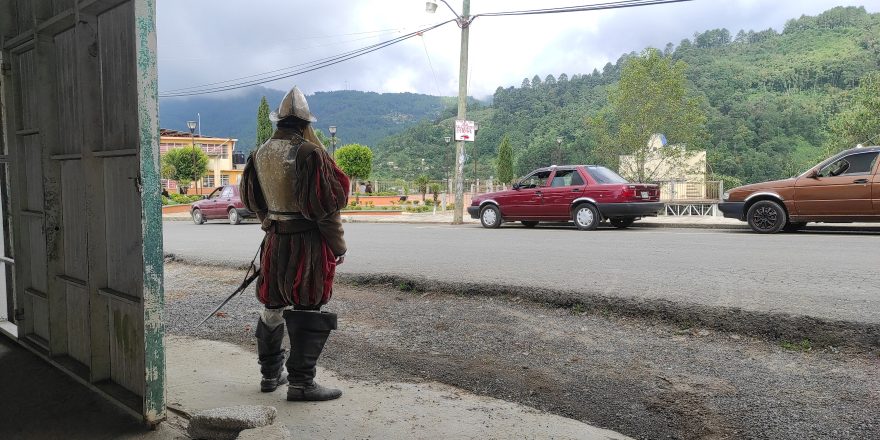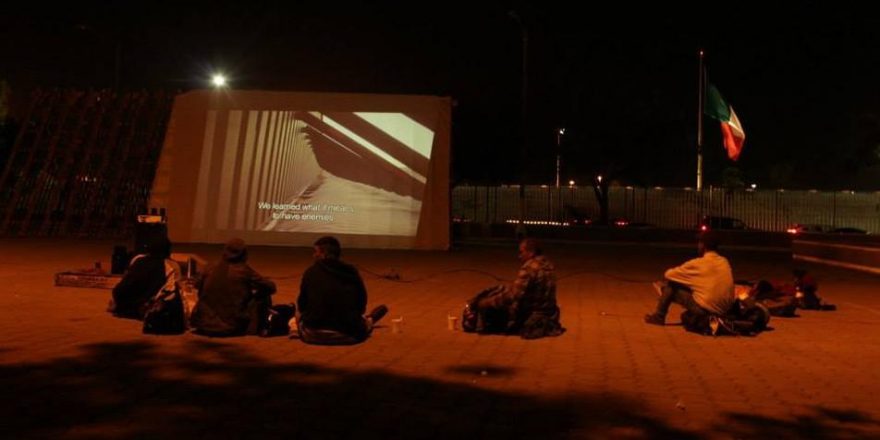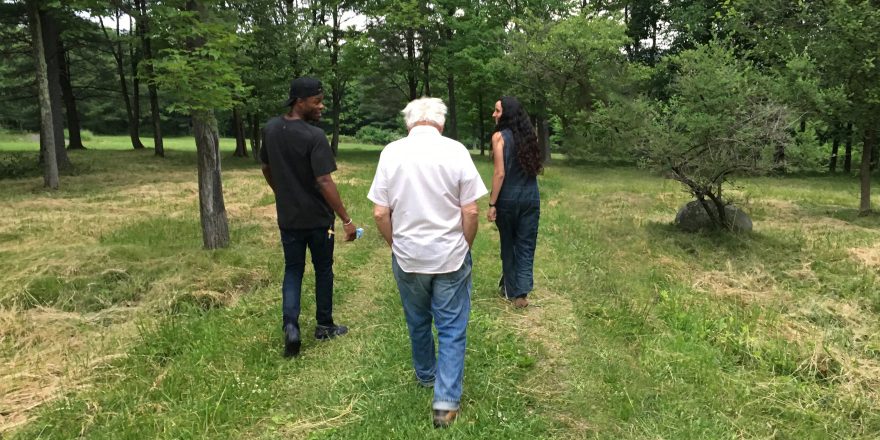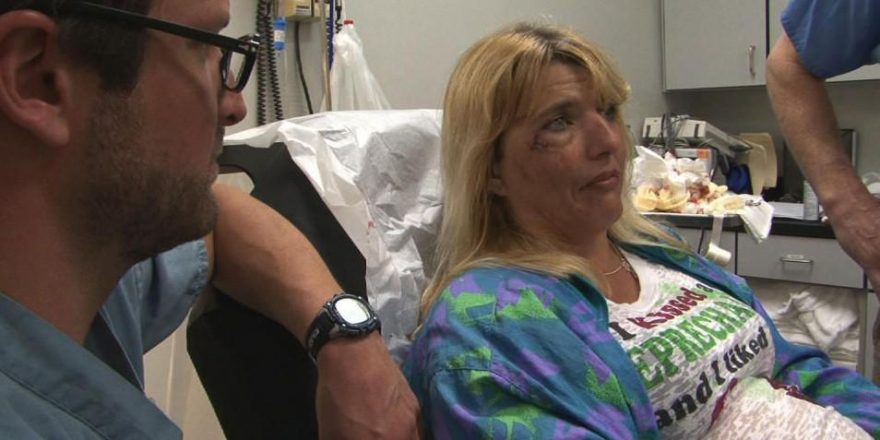Rodrigo Reyes’ new documentary, 499, features a Conquistador who travels through time, from 1521 into the present, and is forced to retrace his steps back to the Aztec capital, 500 years after the fall of that empire. Along his route, the Conquistador must listen to the real stories of victims and survivors of today’s violence, spanning the killing of journalists, mass graves of people who were disappeared, migrants from Central America, and much more.
It was a fresh summer night in the rosy-stoned streets of San Miguel Allende, Mexico, and I found myself standing in a courtyard next to Eduardo San Juan Breña, my brother from Spain and the protagonist of 499. We had both been drinking a rich local mezcal in preparation for the Q&A of our film, hosted by the brilliant programmer Nina Rodriguez, and just as we were finding our flow, an older lady in the back began to speak up, visibly upset: Why, if the stories of the people themselves are so dramatic, do you need to involve a Conquistador who is time-traveling from the 16th century? And why do you present so many atrocious problems in your film, without providing us with solutions? Tell us who is to blame! Can’t you see that it is all so overwhelming? The answers to her questions cut to the heart of what it means to decolonize filmmaking in general, and confronts some of our core expectations of non-fiction, in particular. In other words, this is an essay about the Conquistador we carry inside.
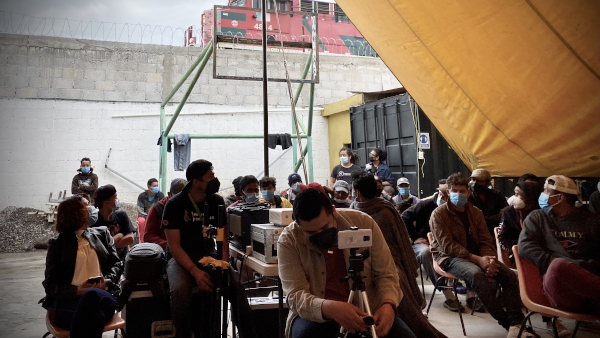
That fresh summer night in San Miguel was ensconced within a larger tour, 15 days on the road with 14 screenings and actions around the film, all happening on the eve of August 13th, the 500th anniversary of the victory of Cortés and his native allies, in bookstores, arts collectives, dance halls, soccer fields, cinematheques and public plazas. From the beaches of Veracruz to the peaks of the Sierra Madre, from the sunlit highlands watched over by volcanoes and the crowded streets of Mexico City, I brought the real people in the film together with the Conquistador once more, to celebrate dialogues around the persistence of colonialism within modern violence. This may sound like high-brow stuff, but in practice, it was a visceral gathering of the urgent voices of my homeland.
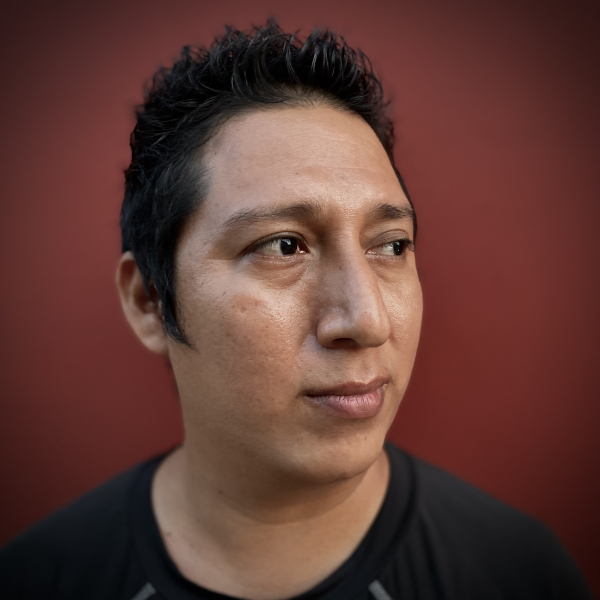
In the balmy, sunlit port of Veracruz, we meet with Jorge Sánchez, whose father Moisés was kidnapped, tortured and cut to pieces by a local mayor, upset with his grassroots reportage of community problems – a crime that is part of a heartbreaking line of assassinations of journalists in Mexico. As we sit in the midst of a strikingly beautiful bookstore full of rare editions that capture the vibrant, painful diversity of centuries of trade, Jorge acknowledges that his case is frozen in time, suspended in the agony of six years of impunity. A sterile history is being written over the corpses of the chroniclers of the truth of our time, much like five centuries ago, when thousands of Mesoamerican books were burned in a deliberate effort to erase the memories of the conquered. Fear is seeking to engulf the truth, while much of society remains indifferent. In such a world, is it really so strange to see a Conquistador wandering about? Is it actually odd for Jorge to speak to this soldier of empire?
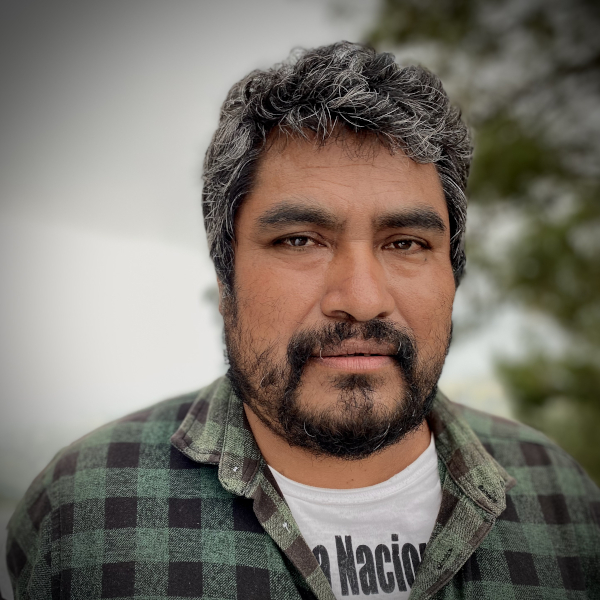
Under the mist of Citlatépetl, a massive peak that gathers itself in a dress of shimmering clouds at the heart of the Eastern Sierra Madre, Sixto Cabrera González and I drive through the town of Soledad Atzompa. We are crowded in a sedan with two local leaders, a large sound mixer wedged in our midst and a huge loudspeaker strapped to the roof of the car. As we drive, one of the officials invites folks to watch a free screening of 499 happening later that evening at the local dance hall. Soledad is a Náhuatl community in resistance, and Sixto is their poet. In the making of the film, he refused to give an interview, like all the other real people involved; instead, Sixto suggested speaking in poetry. When the Conquistador breaches their borders, climbing through the rainy pine forests of the Sierra, the community police officers disarm and apprehend him. The Spaniard disappears from the narrative for a moment and we see Sixto moving through the universe of his life, while reciting a poem about a young man who must make the trek from his indigenous hometown on a mountaintop into the Mestizo town below, to sell lumber – a journey of backbreaking submission and forgetting of oneself.
As we stood by the mountain waiting for the screening to begin, Sixto described the linguistic landscape of Mexico, 68 languages, all at high risk of extinction for lack of speakers. He then related how some producers came to town searching for Náhuatl speakers for a mega production about Cortés’ glorious fight against the Aztecs, while reflecting on how this very same project also decimated parts of the last remaining wetlands in Mexico City, former site of the great Tenochtitlan. The conquest is still here, and its tide of ambition still rises, reaching even to the Sierra. This is why Sixto never questioned the Conquistador. He lives with his shadow every time he is forced to speak Spanish or see his kids off to the big city, as they seek to make ends meet.
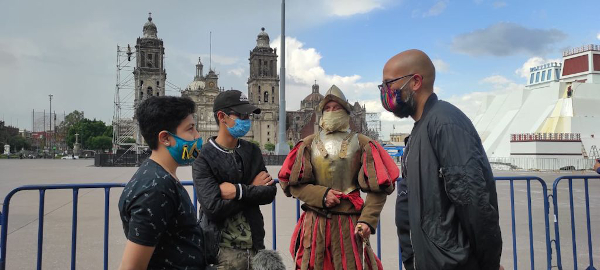
On the edge of Mexico’s throbbing heart, the Zócalo plaza in the capital, Eduardo San Juan stands at attention dressed as the Conquistador. To the north looms the Metropolitan Cathedral, built with the blood-red stones of former Aztec temples, while to the east stands the Presidential Palace, also crafted with the same rocks. In the middle sits a recreation of the main temple of the Aztecs, a newly minted piece of nationalistic pageantry that lights up with neon colors at night. I’m doing an Instagram Live with people on the street, to discuss these 500 years. What does it actually mean, 500 years? Are we any better? Have we learned anything? Or are we continuing to repeat our past violence? It is a delightful experience that embraces teachers, tourists, grandmothers, students, yoga instructors, and more.
Suddenly, I feel a tug on my arm and I turn to discover a serene, beautiful brown face that carries the contradiction of deep anguish: Señora Lorena is here, with her husband, Chucho, and her friend Magda. The story of her daughter Fátima’s brutal rape and murder, and the hellish aftermath endured by her family at the hands of corrupt district attorneys and courts, is relayed with shocking, unnerving detail in the film. So much so, that in this two-week run alone we saw several people walk out in tears, unable to bear watching the scene. Several of them, full-grown men. And yet Lorena remains in the struggle, defiant, asking to be heard. That Thursday afternoon, under the gathering clouds of summer rains, she confronted all of us with the deep woe of being a victim burdened by oblivion. A few hundred yards away from the presidential office, where she and all of her friends have yet to be granted an audience. Instead, when Mexican women have taken to the streets to demand justice, steel walls begin to spring up, shielding official buildings from the voices of the marchers, and the protesters respond by covering the metal barriers with the names of the victims. In this world of stone, in this heavy, deliberate silence running through a country where 11 women are murdered each day, victims of femicides, is it truly strange to see a Conquistador wandering about? In fact, he has always been here.
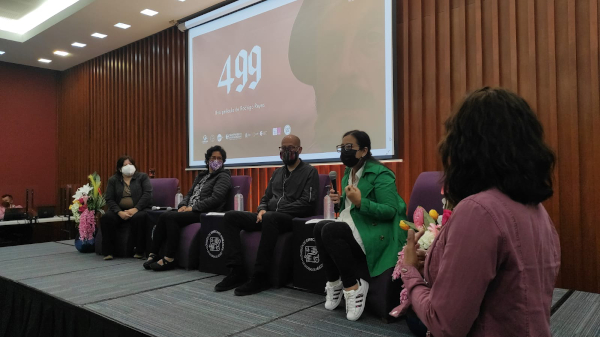
The suspension of disbelief is the cornerstone of cinema. We want to believe in the poetic truth of what is flickering on screen. This need lies behind the many efforts of fiction film to be authentic by, for instance, using Lincoln’s real bible or presenting dialogues spoken entirely in Aramaic, or actors who actually lose 40 pounds for a role, and so on. Yet, in the universe of non-fiction, filmmakers are often asked to provide the fascination of relief – a way of looking at the pain of the world through a lens of comfort and safety. Sadly, many happen to oblige, becoming the avatars of an experience of reality that must be delivered with enough truth to fascinate, while providing enough answers to comfort and alleviate our sensibilities. Everything must feel palpably believable and authentic, because that is where the enjoyment lives. There’s not much room for invention in this premise. This confusion of non-fiction filmmaking with entertainment has led to an approach to reality that ignores the essential truths of the world, many of which are tough, complicated and distressing, and demand new, vibrant points of view.
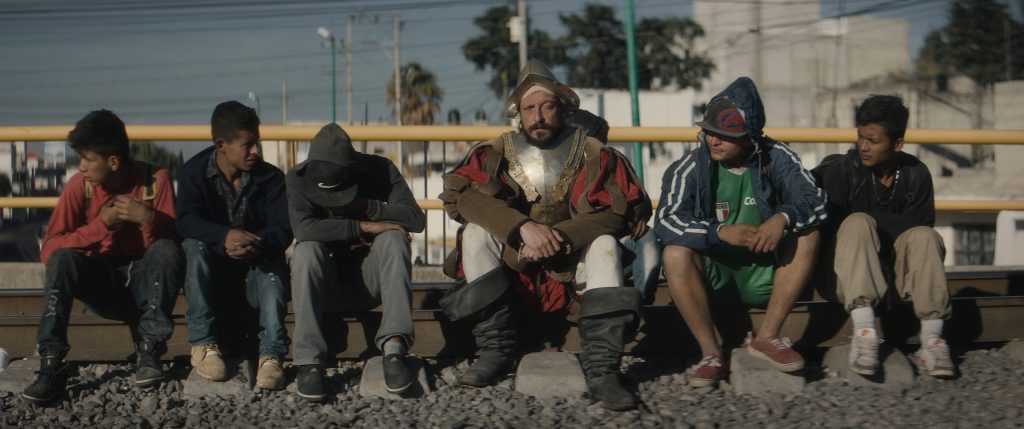
In this act of crafting palatable stories that we can relate to, that come to an inspiring conclusion, is contained a replication of the act of erasing and rewriting history to fit our comforts. By asking these stories of anguish to make sense, we are giving voice to the martial screeds of the Conquistadors, to their siren songs of progress, and their soothing deafness. Yet as I look back at the stories of my friends, the real people featured in 499, I am humbled by the weight of their reality, and I hope that you are too. If we want to care with a purpose, if we want to respond to what is broken in our world, we should be willing to listen to the heartbeat of the truth. We should have the courage to sit with the pain in our midst, while celebrating the resilient beauty of the people bearing the burden of our tired epics of violence.
Featured image shows Eduardo San Juan Breña as the Conquistador in the town of Soledad Atzompa, Veracruz. Photo by Manuel Medina, courtesy Rodrigo Reyes.



